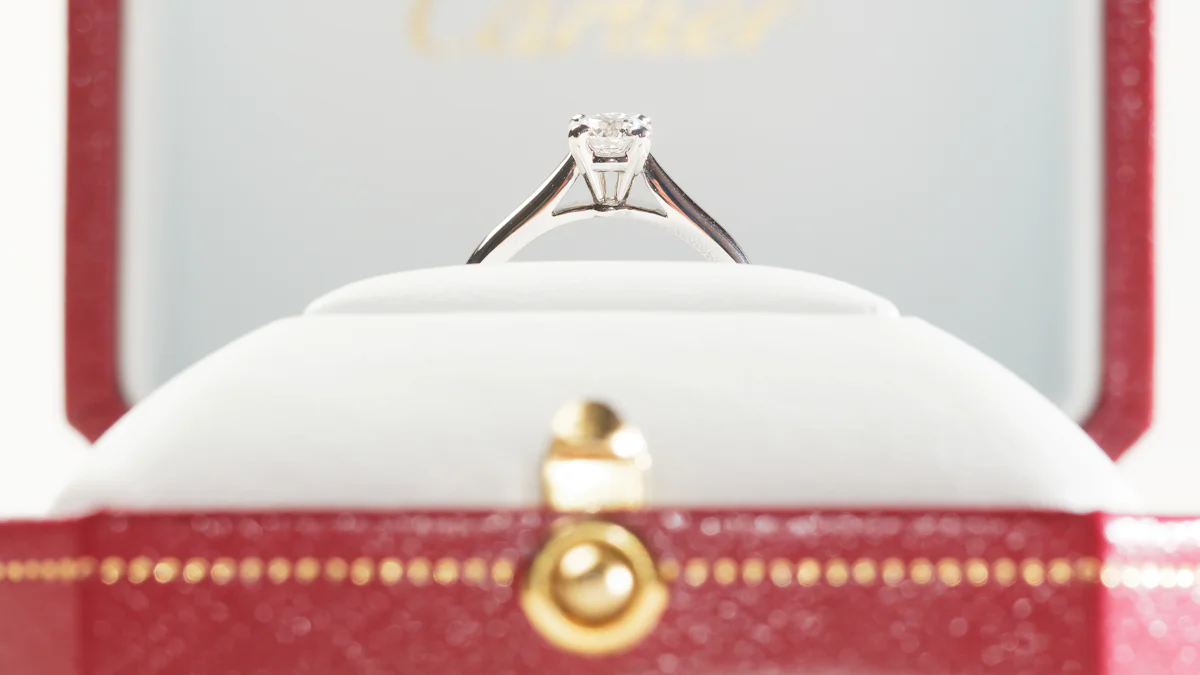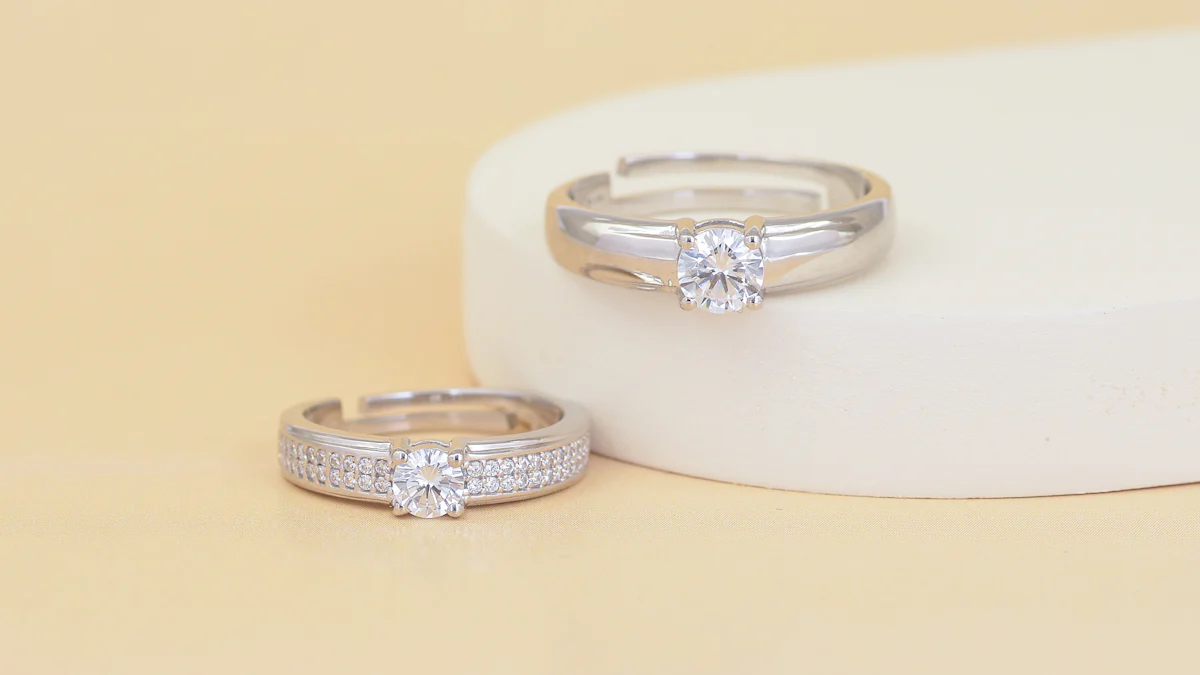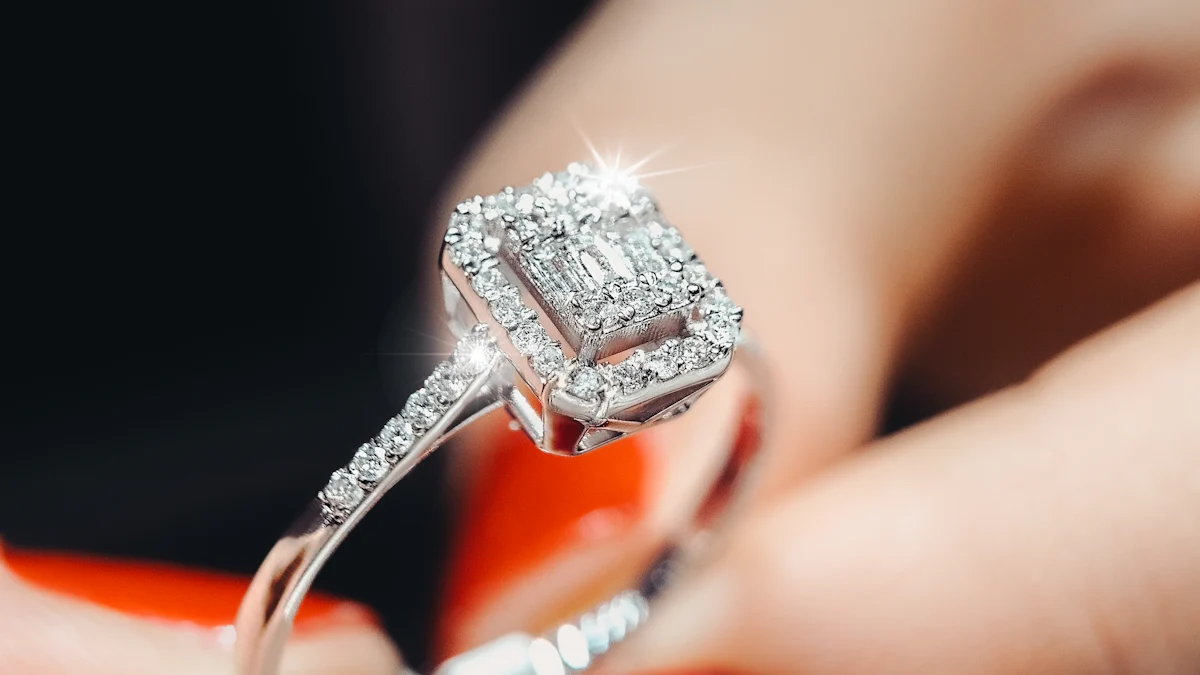Guide to 1 Carat Diamond Cost Factors

When you consider purchasing a 1 carat diamond, several factors influence the 1 carat diamond cost. The cut of the diamond plays a crucial role in its brilliance and price, with well-cut diamonds ranging from $2,200 to $21,000. The color grade, such as G, can affect the price, typically between $5,500 and $12,000. Clarity also impacts the 1 carat diamond cost, with SI1 clarity diamonds priced from $3,500 to $10,000. Lastly, the carat weight itself is a primary determinant, as larger diamonds are rarer and more valuable. Understanding these elements helps you make an informed decision.
Key Takeaways
- Understand the Four Cs: Cut, Color, Clarity, and Carat Weight are essential factors that determine a diamond's price and appearance.
- Prioritize cut quality: A well-cut diamond maximizes brilliance and can significantly increase its value, so aim for an 'Excellent' cut grade.
- Consider color grading: Diamonds graded D (colorless) are the most valuable; lower grades can reduce the price, so choose wisely based on your budget.
- Evaluate clarity: Diamonds with fewer inclusions are rarer and more valuable. Opt for a clarity grade that balances appearance and cost.
- Choose the right ring metal: The metal you select (platinum, gold, etc.) affects the overall cost, so consider both aesthetics and budget.
- Explore lab-grown diamonds: They offer a sustainable and cost-effective alternative to natural diamonds, typically costing 20-40% less.
- Balance your preferences with your budget: Determine what matters most to you—brilliance, size, or sustainability—to make an informed purchase.
The Four Cs of 1 Carat Diamond Cost

Cut
The cut of a diamond significantly influences its brilliance and price. When you choose a diamond with an 'Excellent' cut grade, you ensure maximum brilliance and fire. This quality makes the diamond more valuable. Round diamonds, known for their exceptional brilliance, often command higher prices compared to other shapes. For example, a well-cut round diamond can range from $2,200 to $21,000, depending on other factors like color and clarity.
Color
The color of a diamond affects its cost. The Gemological Institute of America (GIA) and International Gemological Institute (IGI) use a grading scale from D to Z. Diamonds graded D are colorless and the most valuable. As you move down the scale, the presence of color increases, which typically decreases the price. White diamonds, especially those with higher clarity, tend to be more expensive. Understanding this scale helps you determine how color impacts the 1 carat diamond cost.
Clarity
Clarity refers to the presence of internal or external flaws, known as inclusions and blemishes. Diamonds with fewer inclusions are rarer and more valuable. The clarity grade directly influences the price. For instance, diamonds with an SI1 clarity grade might range from $3,500 to $10,000. The variations in price depend on the visibility and size of the inclusions. By choosing a diamond with a clarity grade that balances appearance and cost, you can optimize your purchase.
Carat Weight
Significance in Pricing
Carat weight plays a crucial role in determining the price of a diamond. You might wonder why a 1 carat diamond costs more than smaller diamonds. The reason lies in rarity. Larger diamonds are less common, making them more valuable. As the carat weight increases, the price per carat also rises. This means that a 1 carat diamond will cost significantly more than a 0.9 carat diamond, even if other factors like cut, color, and clarity remain constant.
Price Differences Within 1 Carat
Even within the 1 carat range, prices can vary. The shape of the diamond influences its cost. For example, round diamonds are typically more expensive due to their popularity and the precision required in cutting them. In contrast, fancy shapes like oval or pear might be more affordable. Additionally, the quality of the cut affects the price. A well-cut diamond with an 'Excellent' grade will command a higher price because it maximizes brilliance and fire.
When considering the 1 carat diamond cost, you should also think about the balance between carat weight and other factors. A slightly smaller diamond with superior cut, color, and clarity might offer better value than a larger diamond with lower grades in these areas. By understanding these nuances, you can make a more informed decision when purchasing a diamond.
Additional Factors Influencing 1 Carat Diamond Cost

Ring Metal and Style
Metal Choice and Cost
When selecting a ring for your diamond, the metal you choose can significantly impact the overall cost. Popular metals include platinum, white gold, yellow gold, and rose gold. Each metal has its unique characteristics and price points. Platinum, known for its durability and hypoallergenic properties, often costs more than gold. White gold offers a similar appearance to platinum but at a lower price. Yellow and rose gold provide a classic and warm look, often priced more affordably than platinum. Your choice of metal not only affects the aesthetic appeal but also the total cost of the ring.
Style Impact on Price
The style of the ring setting can also influence the price. Intricate designs with detailed craftsmanship or additional gemstones will increase the cost. A simple solitaire setting may be more budget-friendly compared to a halo or vintage-inspired design. The complexity of the setting and the amount of metal used contribute to the overall price. When considering the 1 carat diamond cost, remember that the ring style can add to the total expense.
Natural vs. Lab-Grown Diamonds
Price Comparison
Natural diamonds and lab-grown diamonds differ in origin, which affects their price. Natural diamonds, formed over millions of years, tend to be more expensive due to their rarity and the extensive mining process. Lab-grown diamonds, created in controlled environments, offer a more affordable alternative. They possess the same physical and chemical properties as natural diamonds but typically cost 20-40% less. This price difference can make lab-grown diamonds an attractive option if you're looking to maximize your budget.
Pros and Cons
Choosing between natural and lab-grown diamonds involves weighing the pros and cons. Natural diamonds hold a timeless appeal and are often seen as a symbol of tradition and rarity. However, they come with a higher price tag and environmental concerns related to mining. Lab-grown diamonds provide a more sustainable and cost-effective choice. They offer the same brilliance and quality as natural diamonds, making them an appealing option for eco-conscious buyers. Consider your values and budget when deciding which type of diamond suits your needs best.
Understanding the factors that affect the cost of a 1 carat diamond empowers you to make informed decisions. The Four Cs—cut, color, clarity, and carat weight—play a significant role in pricing. Additionally, consider the impact of ring metal, style, and the choice between natural and lab-grown diamonds.
Ritani Experts highlight that market conditions, diamond shapes, and origin also influence prices.
To choose wisely, balance your budget with your preferences. Prioritize what matters most to you, whether it's brilliance, size, or sustainability. This approach ensures you find a diamond that aligns with your values and financial plan.
FAQ
What factors influence the cost of a 1-carat diamond?
Several factors determine the price of a 1-carat diamond. The Four Cs—cut, color, clarity, and carat weight—play a significant role. Each aspect affects the diamond's appearance and value. For instance, a well-cut diamond reflects more light, enhancing its brilliance and price. Color and clarity grades also impact cost, with colorless and flawless diamonds being more expensive. Carat weight is crucial, as larger diamonds are rarer and more valuable.
How much does a 1-carat diamond typically cost?
The price of a 1-carat diamond can range from a few thousand dollars to tens of thousands of dollars. This variation depends on the quality of the Four Cs. A diamond with excellent cut, high color grade, and superior clarity will command a higher price. Conversely, diamonds with lower grades in these areas will be more affordable.
Is a round diamond more expensive than other shapes?
Yes, round diamonds often cost more than other shapes. Their popularity and the precision required in cutting them contribute to their higher price. Round diamonds maximize brilliance, making them a preferred choice for many buyers. Other shapes, like oval or pear, might offer a more budget-friendly option while still providing unique beauty.
How does the choice of ring metal affect the overall cost?
The metal you choose for your ring significantly impacts the total cost. Platinum, known for its durability, usually costs more than gold. White gold offers a similar look to platinum but at a lower price. Yellow and rose gold provide classic and warm aesthetics, often at a more affordable rate. Your choice of metal affects both the appearance and the price of the ring.
Are lab-grown diamonds a good alternative to natural diamonds?
Lab-grown diamonds offer a cost-effective and sustainable alternative to natural diamonds. They possess the same physical and chemical properties as natural diamonds but typically cost 20-40% less. Lab-grown diamonds appeal to eco-conscious buyers and those looking to maximize their budget without compromising on quality.
What is the significance of diamond certification?
Certification from reputable gemological laboratories ensures the authenticity and quality of a diamond. Certified diamonds come with a detailed report outlining their characteristics, including the Four Cs. This documentation provides assurance and helps you make an informed purchase. Certified diamonds are often perceived as more trustworthy, which can influence their price.
How can I balance my budget with my diamond preferences?
To balance your budget with your preferences, prioritize what matters most to you. Decide whether brilliance, size, or sustainability is your top priority. Consider a slightly smaller diamond with superior cut, color, and clarity for better value. Explore lab-grown diamonds if you seek affordability and sustainability. By understanding your priorities, you can find a diamond that aligns with your values and financial plan.
Do market conditions affect diamond prices?
Yes, market conditions can influence diamond prices. Factors such as supply and demand, economic trends, and global events can impact the cost of diamonds. Staying informed about market trends can help you make a strategic purchase. Consulting with experts or doing thorough research can provide insights into the best time to buy a diamond.
Can fluorescence affect a diamond's price?
Fluorescence can impact a diamond's price. Some buyers prefer diamonds without fluorescence, as it can affect the stone's appearance under certain lighting conditions. However, fluorescence can also enhance the look of some diamonds, making them appear whiter. The presence or absence of fluorescence can influence your decision and the diamond's cost.
What should I consider when choosing between different diamond shapes?
When selecting a diamond shape, consider your personal style and budget. Round diamonds offer classic brilliance but at a higher price. Fancy shapes like princess, cushion, or emerald provide unique aesthetics and may be more affordable. Each shape has distinct characteristics, so choose one that complements your taste and fits within your budget.
See Also
Essential Elements Influencing Diamond Ring Price Determination
Comparative Analysis of Prices for All Around Diamond Rings
Pricing Insights for a 3 Carat Lab Grown Diamond

